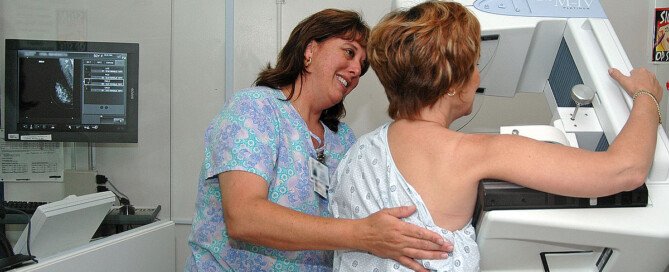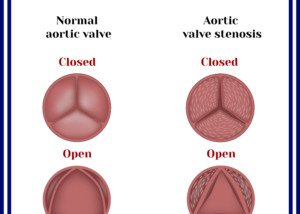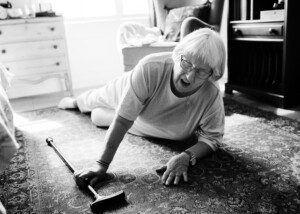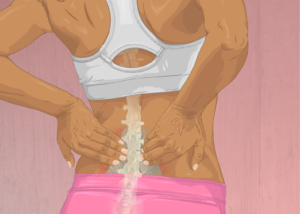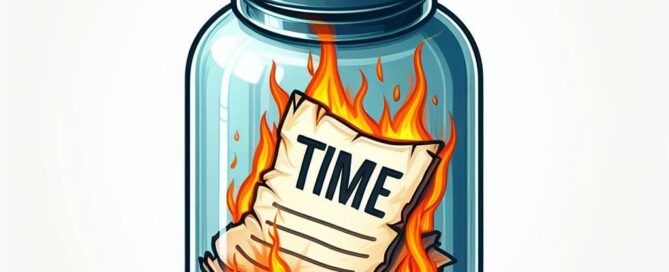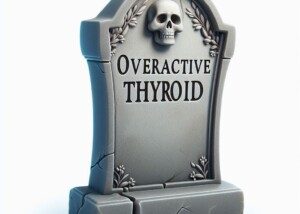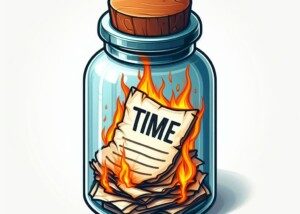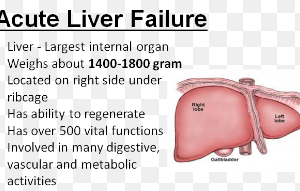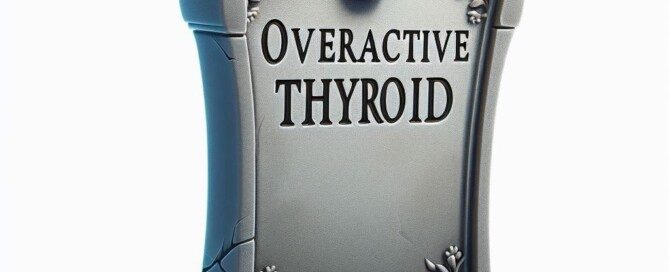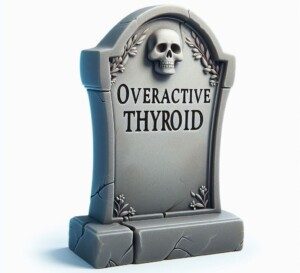What Is a Subtle Benign Appearing Density on a Mammogram?

You may have come upon the descriptor of “subtle benign appearing density” in reference to mammogram imaging. (more…)
How Soon After Intercourse Can Pregnancy Symptoms Occur?
Symptoms or signs of a pregnancy can begin occurring very soon after having sexual intercourse.
But this doesn’t mean that in every case of conception, the symptoms of a pregnancy will always occur very soon after.
How does this all work?
After you have sexual relations, there is a period of time during which conception can occur: from a few hours to five days.
Yes, that’s right: Up to five days after having sex, you can still get pregnant.
Sperm Hangs Around for Awhile
Sperm can live inside the uterus and fallopian tubes for up to five days, during which an egg (ovum) may be released from an ovary – and permeated by a single sperm to create an embryo.
Ever wonder why two sperm can’t penetrate an egg, even though there may be tons of sperm trying to permeate the egg at seemingly the moment that the “first one” achieves this?
Once a sperm penetrates an egg, a chemical reaction occurs that makes the egg impenetrable to the other sperm.
Symptoms of Pregnancy Occurring Soon After Having Sex
“Missed menstrual cycle would be the earliest pregnancy symptom,” says Mylaine Riobe, MD, founder of Riobe Institute of Integrative Medicine.
Dr. Riobe, who’s board certified in ob/gyn and integrative medicine, is the author of “The Answer to Cancer” and has over 15 years’ experience using integrative techniques to treat diverse patients.
This sign will be particularly blaring if your periods have always been very regular and predictable — and you’re vigilant about keeping track.
“Some women begin to feel breast tenderness, mild nausea as soon as a couple weeks thereafter,” says Dr. Riobe. “Symptoms tend to correlate with HCG (human chorionic gonadotropin) levels.”
If your home pregnancy test is positive, have a doctor confirm this, as these tests are not 100 percent accurate — despite what advertisements might have you believe.
This includes for a negative result as well. If you have a gut feeling that you’re pregnant, get a confirmation from a physician, even if two home pregnancy tests in a row have shown a negative — or positive — result.

Dr. Riobe has helped thousands of patients overcome difficult illnesses by addressing root causes, not just masking symptoms. The Riobe Method focuses on the prevention of disease, not the prevention of death from disease. She has 20+ years’ experience using integrative techniques to treat diverse patients.
 Lorra Garrick has been covering medical, fitness and cybersecurity topics for many years, having written thousands of articles for print magazines and websites, including as a ghostwriter. She’s also a former ACE-certified personal trainer.
Lorra Garrick has been covering medical, fitness and cybersecurity topics for many years, having written thousands of articles for print magazines and websites, including as a ghostwriter. She’s also a former ACE-certified personal trainer.
New Hope for Frail or Elderly Who Need TAVR
A breakthrough has been made in the TAVR technique for frail elderly patients at risk for suffering a fatal complication from the procedure – in which the coronary arteries become obstructed.
Though the coronary artery obstruction is a rare complication, it’s lethal in over half those who suffer it.
A technique was developed to prevent the obstruction: bioprosthetic aortic scallop intentional laceration to prevent iatrogenic coronary artery obstruction (BASILICA).
What exactly is TAVR?
Transcatheter aortic valve replacement is a treatment for aortic valve disease, namely stenosis or narrowing of the valve.
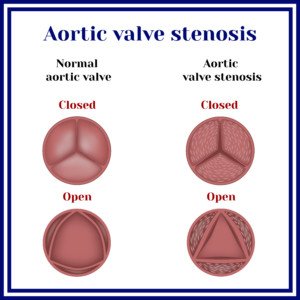
Source: Shutterstock/Mrs_Bazilio
The procedure involves threading a long and thin, flexible tube through the femoral artery of the thigh and feeding it through to the heart.
Without treatment a patient will suffer from impaired blood flow to the organs, plus symptoms such as shortness of breath, chest pain and fainting. No treatment can mean death.
TAVR is an option for elderly or frail patients for whom open heart surgery is too risky.
But a small percentage of elderly or frail patients who receive TAVR develop coronary artery obstruction during the procedure.
What causes the obstruction?
Once the tube or catheter is inside the heart, a balloon is inflated to open up a new valve within the diseased aortic valve.
“Coronary artery obstruction is a potentially fatal complication when a TAVR is done in a patient who had previously undergone an aortic valve replacement with a bioprosthetic valve and is now being considered for TAVR and has a short distance from the aortic valve level to the origin of the coronary artery,” explains Asim Cheema, MD, who’s board certified in internal medicine, cardiovascular diseases and interventional cardiology by the American Board of Internal Medicine. Dr. Cheema is with Your Doctors Online, an online doctor chat site.
“In this situation, if a TAVR is done, there is a risk that the leaflets of bioprosthetic valve are ‘stuck open’ against the origin of the coronary artery by the newly implanted TAVR valve cage,” continues Dr. Cheema.
“If this were to happen, there will be no flow to the coronary artery and to the heart, and the patient will die unless the compromised origin of the coronary artery is quickly opened again — which is very challenging to do during the TAVR case.”
Solution: BASILICA
Previously, a stent was used to open the coronary artery, but this has poor long-term outcomes.
“One of the strategies proposed to address this potential complication is to perform laceration or intentional tear of the bioprosthetic valve leaflet prior to TAVR valve implantation, using a wire that divides the ‘culprit’ leaflet in the middle,” explains Dr. Cheema.
“If this is successful, then when a TAVR valve is implanted, the ‘stuck open’ leaflet separates in the middle — not causing obstruction to the origin of the coronary artery — avoiding a potential complication.”

Your Doctors Online offers a free 7 day trial where you can ask a doctor questions online and get answers in minutes from anywhere 24/7. Learn more here. Dr. Cheema teaches and provides supervision to graduate students at the Institute of Medical Sciences, University of Toronto.
 Lorra Garrick has been covering medical, fitness and cybersecurity topics for many years, having written thousands of articles for print magazines and websites, including as a ghostwriter. She’s also a former ACE-certified personal trainer.
Lorra Garrick has been covering medical, fitness and cybersecurity topics for many years, having written thousands of articles for print magazines and websites, including as a ghostwriter. She’s also a former ACE-certified personal trainer.
Top image: Shutterstock/Robert Kneschke
Source: sciencedaily.com/releases/2018/04/180402192642.html
Is Exercise Worth It for Those with Genetic Heart Disease?

Are you genetically predisposed to heart disease (e.g., Dad had heart attack in his 40s) and have blown off exercise, thinking, “What’s the use?”
Well, you’d better rethink that approach. (more…)
What Does “Frail Elderly” Really Mean?

“Frailty” isn’t just a layperson term; it’s used by doctors to describe a state of body in the elderly.
“Old can look very different in different people,” begins Walter Gaman, MD, FABFM, board certified in family medicine and the author of several award-winning books including “Age to Perfection: How to Thrive to 100, Happy, Healthy, and Wise.”
Dr. Gaman explains, “Some people are able to ski down a mountain or dance the tango at 70, while others may be at risk for injury or simply lack the energy and muscle mass to do anything outside of casual walking.
“Frail elderly refers to people over the age of 65 who are dependent on the help of others or have serious health concerns or risks.
“Frailty is a medical condition that may or may not be reversible. Some elderly become frail due to an illness, injury or disease. The nature of such determines their prognosis.
“For example, if an elderly person becomes frail from bedrest after surgery, once healed they may gain their strength back. Same is true with non-chronic illnesses.
“When an elderly person is considered frail, they may need assisted living or even 24 hour nursing care.”

A variety of frailty scores has been developed to access the condition of “frailty” in the elderly.
The Frailty Score
Dr. Gloria Aguayo (Luxembourg Institute of Health) and her colleagues examined the predictive ability, as far as mortality, of 35 frailty scores for cancer, cardiovascular disease and all-cause mortality.
The data came from the English Longitudinal Study of Ageing.
All Frailty Scores Are Linked to Future Death
Dr. Aguayo’s study (PLUS One, April 2018) involved analyzing data from 5,294 senior age adults who were followed up over a time period of seven years.
• All frailty scores were associated with all-cause death.
• Some were tied to cardiovascular disease.
• None were linked to cancer.
“Frailty is often the precursor to a more serious injury or illness that eventually leads to death,” says Dr. Gaman.
“This is why adults should have good nutrition and proper exercise, including muscle strengthening. Strong, limber and healthy adults are much more likely to bounce back from an illness or injury.”
A senior person who’s very frail may be in denial and believe they’re still as sturdy as a horse.
Even if this person is frequently short of breath and tires very easily, they may still tell family members, “I feel fine!”
Observe if they tire easily when walking around a store or doing light housework.
- Must they nap frequently or take frequent timeouts in a chair to catch their breath?
- Is walking a major challenge for them? But then again, an older person with painful knees may still have a pretty decent heart and kidneys.
Hopefully, you can convince your elderly family member to let you in on their medical care so that you can ask their physicians specific questions.
Frailty is a medical condition that, for some, is truly reversible.

Dr. Gaman is with Executive Medicine of Texas and is with the Staying Young Radio Show 2.0 podcast.
 Lorra Garrick has been covering medical, fitness and cybersecurity topics for many years, having written thousands of articles for print magazines and websites, including as a ghostwriter. She’s also a former ACE-certified personal trainer.
Lorra Garrick has been covering medical, fitness and cybersecurity topics for many years, having written thousands of articles for print magazines and websites, including as a ghostwriter. She’s also a former ACE-certified personal trainer.
.
Source: sciencedaily.com/releases/2018/04/180409103845.htm
Strong Core Muscles Are the Secret to Preventing Sciatica
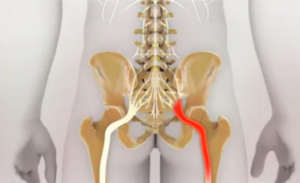
If you have strong core muscles, you are much less likely to ever develop sciatica, a potentially very painful condition.
“The most effective way of using strength training to prevent or lower the risk of sciatica would be to concentrate on the core muscles,” explains Dr. Tom Carpenter, corrective exercise specialist, certified personal trainer and chiropractor. (more…)
Will a Thyroid Removal Shorten Your Lifespan?
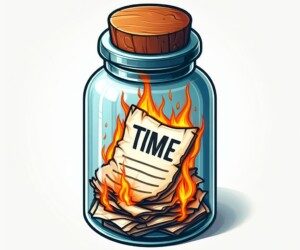
If your doctor tells you that your thyroid needs to be removed, and the first thing that comes to your mind is that this will shorten your life – there is no need to panic over this. (more…)
Can Menstruation Affect Results of a Thyroid Blood Test?

Can menstruation affect the results of a thyroid blood test?
Should you wait until your period is over before having a blood test to check your thyroid health?
“The research that has been done to date does not find a change in the levels when done with or without a menstrual cycle,” says Marcelle Pick, MSN, OB/GYN, NP, in private practice and co-founder of Women to Women Health Center, and author of the book, “Is It Me or My Hormones?”
Even if you’re cramping, bloated and feel miserable during your period or have a bad case of PMS, feel free to have your blood drawn for a thyroid test if that has been already scheduled.
Just make sure that you’re plenty hydrated so that it’s easier for the technician to “find” a vein from which to draw the blood.
 Marcelle Pick holds a BS in nursing from the University of New Hampshire School of Nursing and her MS in nursing from Boston College-Harvard Medical School. She is certified as an OBGYN nurse practitioner. Visit “Is It Me or My Hormones.”
Marcelle Pick holds a BS in nursing from the University of New Hampshire School of Nursing and her MS in nursing from Boston College-Harvard Medical School. She is certified as an OBGYN nurse practitioner. Visit “Is It Me or My Hormones.”
 Lorra Garrick has been covering medical, fitness and cybersecurity topics for many years, having written thousands of articles for print magazines and websites, including as a ghostwriter. She’s also a former ACE-certified personal trainer.
Lorra Garrick has been covering medical, fitness and cybersecurity topics for many years, having written thousands of articles for print magazines and websites, including as a ghostwriter. She’s also a former ACE-certified personal trainer.
.
Top image: ©Lorra Garrick
Can Menopause Cause Bilateral Edema in the Ankles & Calves?

You’ve noticed lately and maybe suddenly that both your ankles and calves are swollen with edema, and you’ve recently completed menopause.
Looking down and noticing that your ankles and lower calves have a puffier than usual appearance may hit upon the vanity nerve, but for some women, it could also shake up the “Is there something wrong with my heart!” nerve.
They may then hope to dear God that the edema in both lower legs is caused by the troublesome though very benign menopause.
“This can happen and is usually due to wide fluctuations in the hormones that occur in perimenopause and in menopause,” says Marcelle Pick, MSN, OB/GYN, NP, in private practice and co-founder of Women to Women Health Center, and author of the book, “Is It Me or My Hormones?”
Pick explains, “Increasing fluids, water and changing the diet to be more plant based, with protein, can be greatly helpful.”
There are many causes of bilateral swelling in the ankles and lower calves.
This is a common condition, but commonality doesn’t mean that it can never be caused by congestive heart failure, liver problems or kidney problems.
It can even be caused by underactive thyroid.
Excessive sitting or standing in one spot can also lead to puffiness around the ankles and lower calves.
Get up and move around more often.
Sit less. Walk more.
Ditch as much of the processed foods in your diet as possible.
Eat more fresh produce.
Snack on whole nuts and seeds, not stuff from a vending machine.
Do the following exercises at the gym: squat, leg press, walking lunge, high stool step-up.

Shutterstock/WoodysPhotos
And if you’ve completed menopause or are of menopausal age, it’s time to see a cardiologist for a routine screening for heart disease.
Congestive heart failure can cause bilateral edema, but congestive heart failure can also compromise kidney function.
In fact, you should also get a total workup from your primary care physician to make sure you don’t have other problems that can be causing that new swelling in your lower legs.
Additionally…
• If you’re a heavy drinker, back off. Liquor is bad for the liver.
• Watch your sodium consumption. Excess sodium can also puff up the ankles.
Many processed foods, such as boxed seasoned rice dishes, are loaded with sodium. Daily sodium intake should be below 2,000 mgs.
• If you’ve gained excess body fat lately, this could be making your ankles and lower legs puffy.
• WARNING: If only one leg has developed a swollen appearance, get to the emergency room, as this is a classic sign of a deep vein thrombosis which can break off and cause a lethal pulmonary embolism.
 Marcelle Pick holds a BS in nursing from the University of New Hampshire School of Nursing and her MS in nursing from Boston College-Harvard Medical School. She is certified as an OBGYN nurse practitioner. Visit “Is It Me or My Hormones.”
Marcelle Pick holds a BS in nursing from the University of New Hampshire School of Nursing and her MS in nursing from Boston College-Harvard Medical School. She is certified as an OBGYN nurse practitioner. Visit “Is It Me or My Hormones.”
 Lorra Garrick has been covering medical, fitness and cybersecurity topics for many years, having written thousands of articles for print magazines and websites, including as a ghostwriter. She’s also a former ACE-certified personal trainer.
Lorra Garrick has been covering medical, fitness and cybersecurity topics for many years, having written thousands of articles for print magazines and websites, including as a ghostwriter. She’s also a former ACE-certified personal trainer.
.
Top image: Shutterstock/Phat1978
How Long Can You Live with Untreated Overactive Thyroid?
Not having your overactive thyroid treated can kill you.
In fact, it’s not if, but when you’ll die if you don’t get treatment for hyperthyroidism. (more…)

